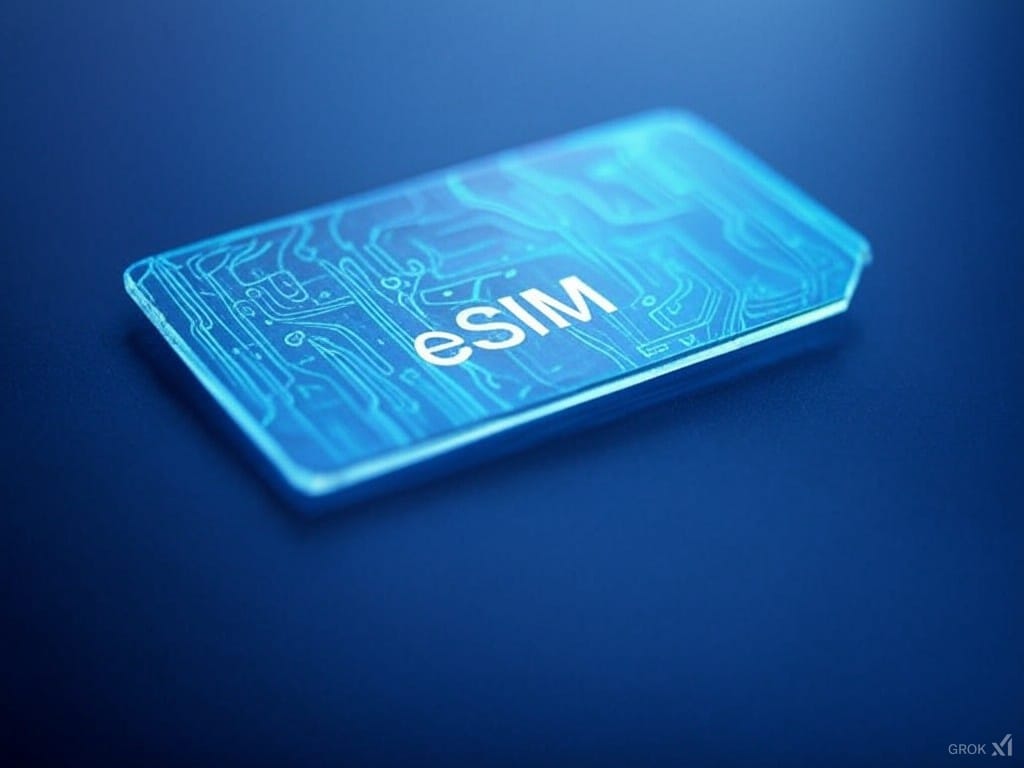Here’s the translation of your text into American English:
With the advancement of mobile technology, the way we connect our devices to cellular networks has also evolved. One of the latest developments in this field is the eSIMThe eSIM, which translates to “integrated SIM card” or “embedded SIM,” promises to change the way we manage our mobile lines. (embedded SIM), which promises to change the way we manage our mobile lines. Below, we explain what an eSIM is, how it works, and how it differs from traditional physical SIM cards.
What is an eSIM?
The eSIM, short for embedded Subscriber Identity Module, is a chip integrated directly into smartphones and other devices, such as smartwatches, tablets, or connected cars. Unlike physical SIM cards, which need to be inserted into a specific slot, the eSIM is soldered inside the device and allows connection to mobile networks without the need for a removable card.
The eSIM uses a universal standard defined by the GSMA (the global association representing mobile operators), which ensures compatibility with a wide range of devices and carriers around the world.
In Spain, many virtual mobile operators (MVNOs) do not have the option to deliver eSIMs, so this is also an important consideration when choosing a mobile operator.
How does an eSIM work?
The operation of an eSIM is completely digital. Instead of obtaining a physical SIM card from your operator, you can activate your mobile line by downloading a user profile directly onto the device. This process involves scanning a QR code provided by your operator or using their app to complete the setup.
The general steps to activate an eSIM are:
- Sign up for a data plan compatible with eSIM.
- Receive a QR code or instructions from the operator.
- Scan the QR code from the device settings.
- Complete the activation process.
Once activated, the eSIM allows you to manage multiple lines from a single device, which is useful for those who need to switch between personal and work numbers or when traveling abroad.
Advantages of eSIM
The eSIM offers several advantages for both consumers and device manufacturers:
- Ease of use. You don’t need to visit a physical store or wait to receive a SIM by mail; activation is entirely digital.
- Multi-number compatibility. It allows you to manage multiple lines on a single device without having to change cards.
- Less physical space. By eliminating the SIM slot, manufacturers can utilize internal space to enhance other components or increase water and dust resistance.
- Simplified operator switch. Changing providers is as easy as downloading a new network profile.
- Sustainability. By eliminating plastic and physical chips, the eSIM is more environmentally friendly.
Comparison: SIM vs eSIM
Below is a table summarizing the main differences between traditional SIMs and eSIMs:
| Feature | Physical SIM | eSIM |
|---|---|---|
| Form | Removable plastic card. | Integrated chip within the device. |
| Activation | Requires inserting the physical card. | Digital activation via QR or app. |
| Operator switch | You need a new SIM card. | A new network profile is downloaded. |
| Space occupied | Takes up a slot in the device. | Takes up no additional space. |
| Multi-number compatibility | Limited to dual-SIM devices. | Allows multiple profiles on a single chip. |
| Environmental impact | Generates plastic waste. | More sustainable by eliminating plastic. |
| Security | Can be physically lost. | More secure as it is integrated into the device. |
Disadvantages of eSIM
Although eSIMs offer many advantages, they also have some drawbacks:
- Limited compatibility. Not all devices or operators are compatible with eSIM, although adoption is rapidly increasing.
- Digital dependency. If you lose access to your device and need to change operators or recover your line, the process can be more complicated than with a physical SIM.
- Restrictions in some countries. In certain markets, eSIM technology is still not widely available.
Which devices are compatible with eSIM?
Currently, many high-end phones and some mid-range models already include support for eSIM. Among them are:
- Apple: iPhone XS and newer, iPads Pro, and Apple Watch.
- Samsung: Galaxy S20 and newer, Galaxy Z Fold and Flip.
- Google: Pixel 3 and newer.
- Others: Some devices from brands like Huawei, Oppo, and Motorola.
In addition to phones, smartwatches, tablets, and laptops are also adopting this technology, further reinforcing its presence in the digital ecosystem.
The future of eSIM
The eSIM is poised to become the global standard for mobile communications. With benefits for users, operators, and manufacturers alike, this technology offers greater flexibility and convenience. As more devices and operators adopt eSIM, users will be able to enjoy a more efficient and sustainable mobile experience.
Although physical SIMs will continue to coexist in markets where eSIM is not yet widely available, it is only a matter of time before this new technology becomes the norm.
The eSIM not only redefines how we connect our devices but also opens the door to a world where communications are more agile, accessible, and environmentally friendly. Are you ready to make the leap to the connectivity of the future?

